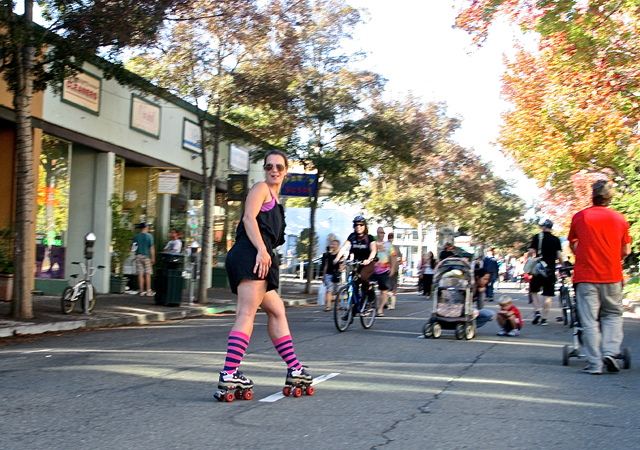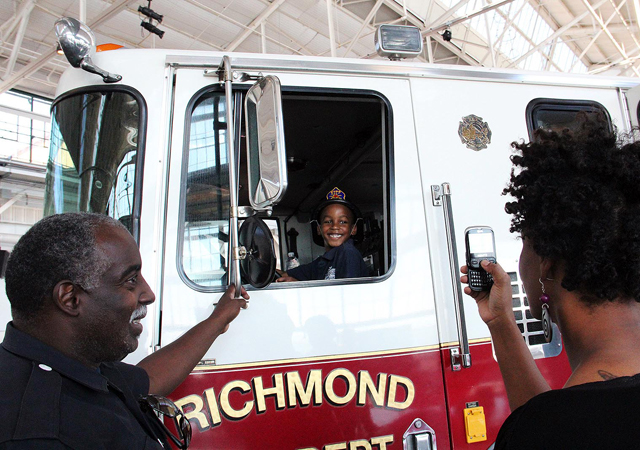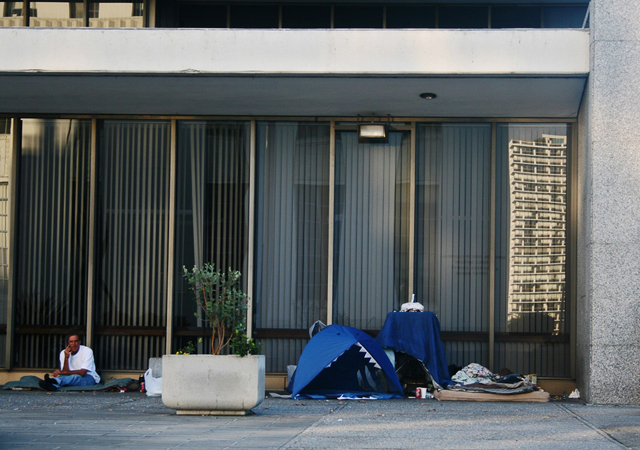Mothers of the Desert Trails Parent Union stand inside their headquarters in Adelanto. They are the first in the country to successfully employ a so-called 'parent trigger law' to radically transform a failing public school. They voted to hand over control of the elementary school to a local charter school group, after 18 months of battling the Adelanto Elementary School District and its teachers. (Ana Tintocalis/KQED)
Between 30,000 - 40,000 people headed to Shattuck Avenue on Sunday for Berkeley’s first Sunday Streets event which saw 17 blocks, from Haste to Rose, closed to traffic and open to pretty much everything else. (Nancy Rubin/Berkeleyside)
 Anna Lisa jumps into a Stanford campus fountain dyed red in preparation for the Stanford football game against California Berkeley. (Kristina Krohn / Peninsula Press)
Anna Lisa jumps into a Stanford campus fountain dyed red in preparation for the Stanford football game against California Berkeley. (Kristina Krohn / Peninsula Press)




